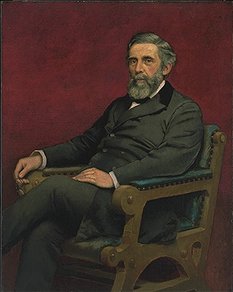George S. Boutwell (1818 - 1905) had spent a long career in public service, including tours of duty as the first Commissioner of Internal Revenue (1862 - 1863) and as a Congressman (1863 - 1869), before being appointed by President Ulysses S. Grant

Sec. George S. Boutwell
George Chickering Munzig
Oil on canvas
1880
63 x 53 1/4 x 5 1/2"
P.1881.3
as Secretary of the Treasury in 1869. His chief objectives as Secretary were to improve the organization of the Department and to continue reducing the national debt. Boutwell set up a system for the manufacture of money which made it easier to detect counterfeit currency and he reorganized the Mint, which became part of the Treasury Department in 1873 after seventy-four years as an independent agency. He also instituted an efficient system of bookkeeping and accounting for the Customs Houses.
Shortly after his appointment, Boutwell had to rise to the challenge of the infamous "Black Friday," September 23, 1869, when speculators on Wall Street tried to corner the gold market. He successfully blocked their scheme by releasing great quantities of Treasury gold and thereby flooding the market. Boutwell left Treasury in 1873 to return to the Senate.
About the Artist
Born in Boston in 1859, George Chickering Munzig (1859 - 1908) trained at the Brimmer Art School in Boston before going to Paris to study at the Academie Julian under Gustave Boulanger and Jules Lefebre. He returned to his birthplace in 1872 to portray many prominent Bostonians, specializing in crayon drawings and later in oils. He was a member of the Boston Art Club and a founder and first president of the Tavern Club, a men's eating club on Park Square. Although George S. Boutwell was alive when this portrait was painted around 1880, stylistically it appears to have been copied from a photograph.